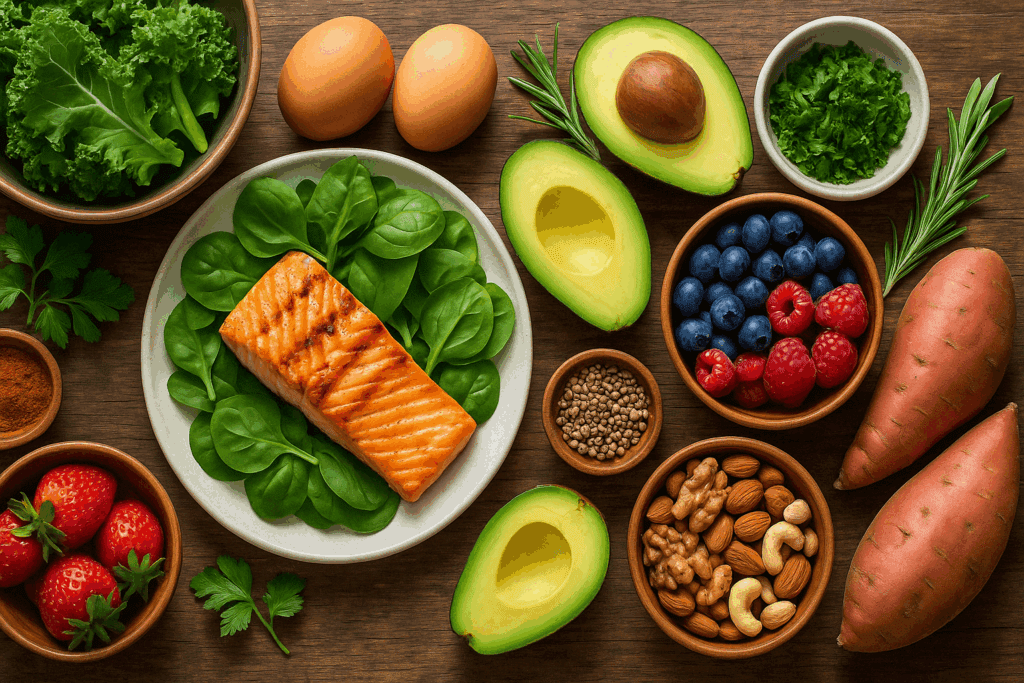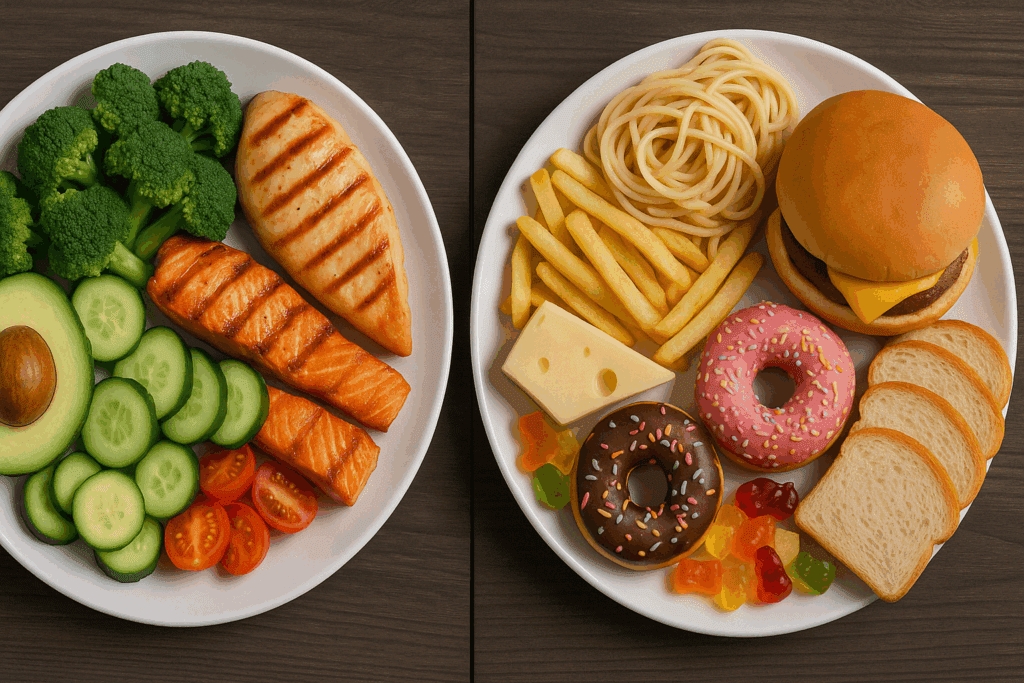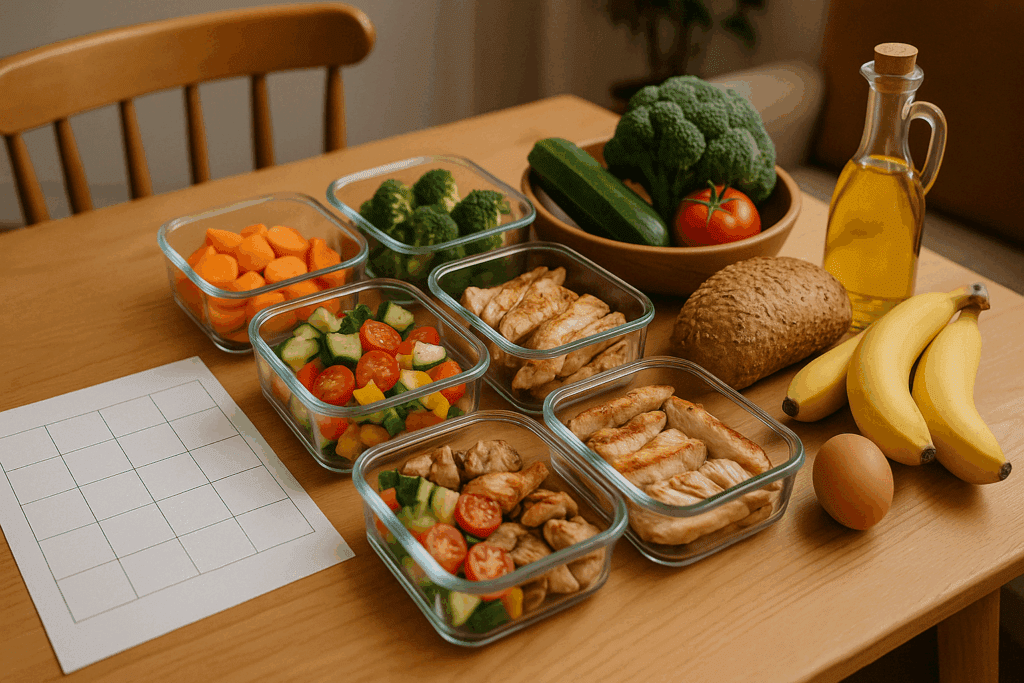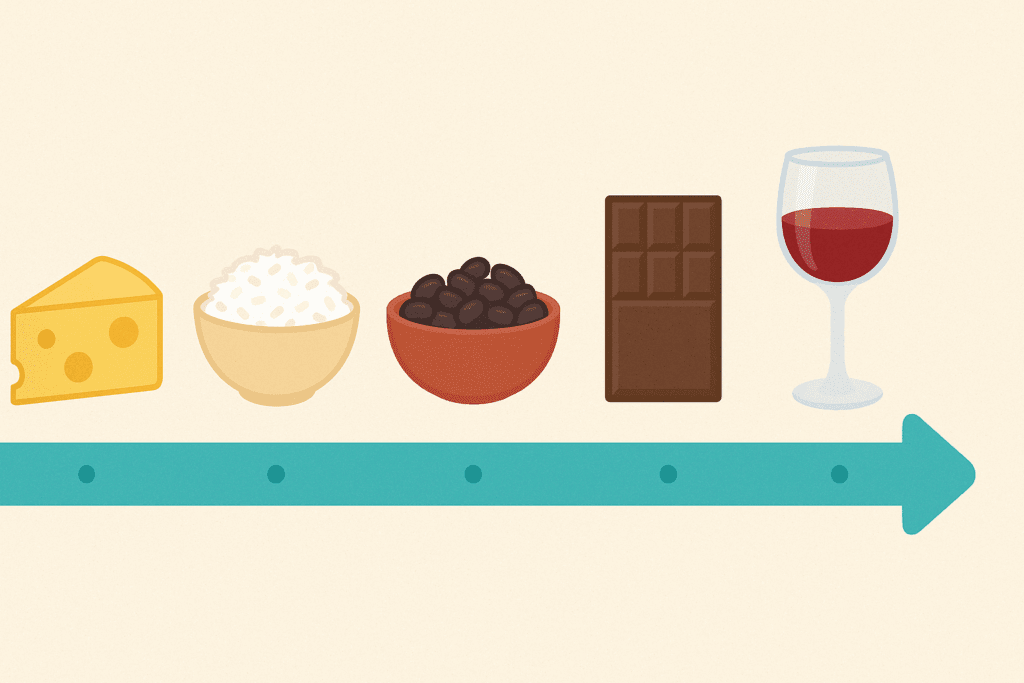Introduction: Why a 30-Day Diet Can Reset Your Health and Relationship with Food
For many people looking to reset their eating habits, improve energy levels, and kickstart a healthier lifestyle, a structured 30-day diet challenge can serve as the catalyst they need. In a nutritional world full of trends, fads, and conflicting advice, a program grounded in whole, unprocessed foods offers a science-backed and sustainable path forward. The Whole30 approach—also referred to as the 30 whole diet or thirty diet—has gained a reputation for being a transformative experience that prioritizes real food, mindful eating, and long-term behavioral change.
A 30 day diet challenge is not just about shedding weight, although many participants do experience measurable physical changes. At its core, it’s about reconnecting with your body, eliminating inflammatory and potentially disruptive foods, and learning how your dietary choices affect everything from mood to digestion. Whether you’re exploring this program to reduce sugar cravings, identify food sensitivities, or jumpstart fat loss with 30 day weight loss foods, the emphasis remains on nourishment over deprivation. With a properly curated 30 day diet plan that includes whole thirty approved foods and a comprehensive understanding of the whole thirty food list, it’s possible to complete the challenge with clarity, confidence, and lasting benefits.
You may also like: How a Whole Foods Diet Supports Sustainable Weight Loss: Expert Tips for Eating Whole Foods to Lose Weight Safely

Understanding the Philosophy Behind the 30 Whole Diet
The core idea behind the 30 whole diet is the belief that what we eat can either enhance or impair our health. Many of today’s chronic conditions—ranging from digestive distress to fatigue and autoimmune issues—are thought to be exacerbated by processed foods, added sugars, dairy, alcohol, legumes, and grains. While these foods are not inherently “bad,” they can trigger inflammation or other adverse effects in some individuals. The Whole30 approach recommends removing these items entirely for thirty days to allow the body to reset without dietary interference.
The program is not a forever diet. It’s meant to act as a nutritional reset—a way to identify which foods may be causing problems and to cultivate a more conscious relationship with food. After the 30 day diet challenge, participants reintroduce potentially problematic items one at a time to observe their body’s responses. This phase is just as critical as the elimination phase because it empowers individuals with data-driven insights based on their personal experience. It shifts the conversation away from generic diet rules and into a deeply individualized process.
This structure fosters a profound sense of awareness. The thirty day diet challenge requires commitment, but it also offers freedom from calorie counting, weighing, and obsessing over macronutrient ratios. Instead, it focuses on building a sustainable, mindful way of eating that can last long after the initial 30 days are over.

The Whole Thirty Food List: What You Can Eat Freely and Why It Matters
The whole thirty food list is at the heart of the program. It’s composed of whole, minimally processed foods that offer nutritional density without unnecessary additives. This includes an abundance of vegetables, moderate amounts of fruit, high-quality proteins, healthy fats, herbs, and spices. Rooted in anti-inflammatory principles, this list steers participants toward nutrient-dense options that support digestion, hormone regulation, and metabolic function.
Among the most commonly embraced whole thirty approved foods are leafy greens like kale and spinach, cruciferous vegetables such as broccoli and cauliflower, and starchy vegetables like sweet potatoes. Fruits, though limited to moderate quantities, provide natural sweetness and essential vitamins—especially berries, apples, and citrus fruits. Proteins like pasture-raised eggs, organic chicken, wild-caught seafood, and grass-fed beef form the foundation of many meals, accompanied by fats from avocados, olives, coconut products, and nuts.
One of the strengths of the wholesome 30 food list is its emphasis on variety. There’s a misconception that restrictive eating must be bland or monotonous, but the Whole30 template encourages culinary creativity. By using herbs, spices, infused oils, and a rainbow of produce, participants often find that their meals become more flavorful and enjoyable than their previous diets. With the support of real food, blood sugar becomes more stable, energy levels increase, and cravings diminish—all without the need for processed alternatives.

Whole 30 List of Foods to Avoid: A Strategic Reset for Your System
To fully reap the benefits of the thirty diet, it’s equally important to understand what’s excluded. The whole 30 list of foods to avoid is designed not to punish, but to protect the integrity of the reset process. These include added sugars of any kind (including honey and maple syrup), alcohol, grains (wheat, rice, corn, etc.), legumes (beans, peanuts, soy), dairy products, and any foods containing carrageenan, MSG, or sulfites.
Each of these categories has a rationale behind its exclusion. Grains and legumes, while generally healthy in many diets, contain compounds like lectins and phytates that may impair nutrient absorption or irritate the gut in sensitive individuals. Dairy, especially from conventionally raised cows, can provoke inflammation or digestive issues. Added sugars and alcohol disrupt blood sugar balance and may contribute to mood fluctuations or fatigue. By removing these for 30 days, the body is given a chance to recalibrate, and individuals are able to assess which, if any, of these foods might be worth avoiding long term.
During this reset, reading labels becomes second nature. Even seemingly healthy packaged foods may contain hidden sugars or preservatives that compromise the goals of the challenge. As participants gain awareness of ingredient lists, they build valuable lifelong skills in identifying high-quality, clean foods—a hallmark of mindful nutrition.
30 Day Diet Plan: Creating Structure Without the Stress
A thoughtfully constructed 30 day diet plan is essential for success. While the Whole30 does not require calorie tracking or portion control, it thrives on structure, consistency, and preparation. Mapping out meals in advance can help participants avoid the temptation of convenience foods that don’t align with the whole30 diet food list.
The plan should aim for three satisfying meals per day, each containing a balance of protein, healthy fats, and vegetables. This trifecta not only supports satiety but also helps maintain hormonal stability, especially important during the first two weeks when cravings or withdrawal symptoms may occur. A typical day may begin with a veggie scramble cooked in olive oil, followed by a lunch of grilled salmon over a spinach and sweet potato salad, and a dinner of roasted chicken with Brussels sprouts and avocado.
The magic of the 30 day diet plan lies in its flexibility. While the structure is consistent, the specific foods can vary widely based on preferences, seasonality, and cultural traditions. By planning ahead with weekly grocery lists and batch-prepped ingredients, participants can minimize stress and focus on enjoying the experience. As habits form and confidence builds, what once seemed restrictive becomes liberating.

Day by Day Diet Plans for 30 Days: Building Momentum Through Routine
One of the most effective strategies for sticking with the program is following day by day diet plans for 30 days. This removes the daily decision fatigue that often derails healthy intentions. When you know exactly what you’re eating each day, you’re less likely to reach for convenience options that fall outside the parameters of the 30 whole diet.
A day-by-day plan offers more than just meal ideas—it helps participants track their physical and emotional responses to foods. For example, by journaling how you feel after a week without dairy or sugar, you may notice improvements in skin clarity, digestion, or mood. These insights provide powerful motivation to keep going, especially during the challenging “detox” phase around days 3 to 7, when the body is adjusting to new fuel sources.
Each week of the thirty day diet challenge brings its own rhythm. The first week often feels energizing but includes cravings. Week two is about stabilization, while week three typically brings increased mental clarity and digestive balance. By week four, participants often report improved sleep, mood, and body composition. These benefits compound, reinforcing the value of consistency and the effectiveness of whole thirty approved foods.
30 Day Weight Loss Foods That Support Real, Sustainable Change
While the primary goal of the 30 day diet isn’t necessarily weight loss, it’s a common and often welcome side effect. This is largely due to the high quality of the 30 day weight loss foods emphasized throughout the challenge. These include nutrient-dense options like leafy greens, high-fiber vegetables, lean proteins, and healthy fats—all of which support metabolic health and satiety.
One of the most powerful aspects of this approach is how it naturally curbs overeating. Because the foods on the wholesome 30 food list are rich in volume and nutrients, they send strong satiety signals to the brain. Participants often find they are less interested in snacking and more tuned into their hunger cues. This mindful relationship with food leads to better portion control without the need for restriction.
In addition, eliminating sugar and refined carbohydrates reduces insulin spikes, which are commonly associated with fat storage. As insulin levels stabilize, the body becomes more efficient at burning fat for energy. The anti-inflammatory nature of the diet may also reduce water retention and bloating, helping participants feel leaner and more energized within the first two weeks.

Smart Tips for Making the Thirty Day Diet Challenge More Achievable
Success on the thirty day diet challenge often comes down to mindset and preparation. One key principle is to treat the process as an experiment rather than a punishment. Instead of focusing on what you “can’t” have, shift your perspective to everything you’re gaining—better energy, improved digestion, and insight into your personal nutrition needs.
Meal prep is a game changer. Setting aside a few hours once or twice a week to chop vegetables, cook proteins, and make sauces can save time and reduce decision fatigue during busy weekdays. Keeping whole thirty approved foods readily accessible in your fridge and pantry ensures that you’ll always have something compliant to reach for, even on your most hectic days.
Social situations can be tricky during the 30 day diet challenge, so planning ahead is essential. Bringing your own dish to a gathering, reviewing restaurant menus in advance, or explaining your goals to supportive friends and family can all help minimize stress and maximize accountability. Remember, this is your journey—and every day you completely build discipline and momentum.
Overcoming Common Obstacles During the 30 Day Diet Journey
No 30 day diet plan is without its challenges. From sugar cravings and social pressures to travel disruptions and emotional eating, obstacles will arise. The key is not to avoid them altogether, but to anticipate them and develop strategies to navigate through them with resilience and intention.
One of the most common hurdles during the 30 whole diet is the “carb flu,” a temporary withdrawal phase that occurs as the body shifts from sugar-burning to fat-burning. This may bring headaches, irritability, or fatigue, especially during the first week. Staying hydrated, prioritizing sleep, and ensuring that meals are rich in healthy fats and proteins can ease the transition.
Emotional eating is another pitfall. Many people turn to food for comfort, stress relief, or distraction. The Whole30 invites participants to confront these patterns and explore other coping mechanisms, such as journaling, walking, or mindfulness exercises. With practice, emotional regulation becomes easier, and food becomes nourishment rather than escape.

Reintroduction and Beyond: What Happens After the Whole30 Ends
The thirty diet does not end on day 30. In fact, the reintroduction phase is arguably the most critical part of the journey. This is when participants slowly add back the foods that were eliminated—one category at a time—while observing how their body responds. This phase provides powerful feedback about which foods support health and which may trigger inflammation, bloating, or mood changes.
A common reintroduction strategy begins with dairy, then moves to grains, legumes, and finally sugar or alcohol. Spacing each reintroduced food group by a few days allows for clearer identification of cause and effect. Some participants find that they can tolerate certain foods in moderation, while others discover that eliminating specific triggers yields long-term benefits.
The insights gained from this process empower individuals to create their own sustainable eating plan. Whether you continue with a modified version of the 30 whole diet or simply use it as a reset a few times per year, the experience creates a foundation for lifelong mindful eating. You learn how to listen to your body, honor your needs, and make choices rooted in self-respect rather than restriction.
Frequently Asked Questions: 30-Day Diet Challenge and the Whole Thirty Lifestyle
1. Can the 30 day diet be adapted for people with demanding work schedules or frequent travel?
Absolutely. While the 30 day diet challenge does require planning and consistency, it can be adapted to accommodate a hectic lifestyle. The key is to prioritize portability and simplicity. Preparing whole thirty approved foods in advance—like hard-boiled eggs, sliced vegetables, grilled chicken, or compliant nut butters—ensures you always have something on hand when traveling or navigating unpredictable work hours. It’s also helpful to scout out restaurants or grocery stores at your destination that carry items from the whole thirty food list. Those who follow the 30 whole diet on the go often rely on small coolers, meal delivery services that offer compliant options, or portable containers with day by day diet plans for 30 days mapped out to minimize last-minute decisions.
2. How do social and cultural food traditions fit into the thirty day diet challenge?
Integrating cultural traditions into a thirty diet can feel challenging at first, especially if meals are heavily centered around grains, legumes, or dairy—items included in the whole 30 list of foods to avoid. However, this period can be an opportunity to explore traditional dishes that are naturally aligned with the wholesome 30 food list. Many global cuisines offer compliant meals, such as Mediterranean grilled vegetables, Thai-inspired coconut curries, or Latin American ceviche. Adapting cherished recipes with whole30 diet food list substitutions not only keeps cultural connections intact but can also inspire new family traditions. If communal meals are central to your culture, involving loved ones in the 30 day diet plan may open up conversations about mindful eating and wellness without sacrificing shared experiences.
3. What psychological benefits can people expect from completing a 30 day diet challenge?
Beyond the physical benefits, the psychological shifts during the 30 day diet challenge are often profound. Many participants report a renewed sense of control over their eating habits, particularly regarding emotional eating or cravings. Because the whole thirty food list eliminates common trigger foods, individuals become more attuned to how hunger, stress, or boredom influence their behavior. Completing the thirty day diet challenge also fosters self-efficacy, building confidence that spills over into other areas of life. The discipline required to navigate social situations or emotional triggers without relying on food often leads to greater emotional resilience. Over time, the structure of the 30 day diet helps many people reframe their relationship with food as something nourishing rather than escapist.
4. How can athletes or highly active individuals thrive on the 30 whole diet without compromising performance?
For athletes, energy and recovery are key—so fueling properly on the 30 whole diet is essential. While the whole 30 list of foods to avoid includes grains and legumes, there are still plenty of nutrient-dense carbs on the wholesome 30 food list that support performance. Sweet potatoes, bananas, and winter squash can be strategically timed around workouts to maintain glycogen stores. Protein sources such as compliant turkey burgers or grilled salmon support muscle recovery, and fats from avocado or nuts can stabilize energy levels throughout the day. For those on day by day diet plans for 30 days, cycling meals to align with training intensity can help maximize output without compromising the integrity of the challenge. Many athletes even report clearer digestion and better sleep while on the 30 day diet plan.
5. Are there any whole thirty approved foods that offer natural mood-boosting benefits?
Yes, many foods on the whole thirty food list provide key nutrients that support mental and emotional health. Omega-3-rich options like wild-caught salmon, sardines, and walnuts are known for their anti-inflammatory and cognitive-enhancing properties. Leafy greens such as kale and spinach provide folate, which supports serotonin regulation, while eggs contribute choline and vitamin D—both associated with neurological balance. Avocados, a staple in the 30 day diet plan, contain healthy fats that support brain cell structure and hormone production. Because the thirty diet eliminates sugar and processed foods, many individuals also report fewer mood swings and a greater sense of calm. These mood-regulating foods become especially important in the early days of the 30 day diet challenge when cravings and emotional shifts are most common.
6. What strategies help sustain the momentum after completing the thirty day diet challenge?
Post-challenge, many people fear “falling off the wagon.” One effective approach is using your 30 day diet results as a baseline to create a long-term eating style based on what worked for you. Reintroduction is a powerful tool, not just to identify sensitivities, but to empower intentional choices. Many opt for a modified version of the 30 whole diet, allowing occasional indulgences while keeping whole thirty approved foods as the foundation. Creating new day by day diet plans for 30 days beyond the initial challenge can reinforce structure without strict rules. Social support, journaling about how foods affect your body, and keeping your kitchen stocked with items from the wholesome 30 food list all help maintain consistency and reduce decision fatigue.
7. What are common nutrient concerns when following the 30 day diet, and how can they be addressed?
While the 30 day diet is nutrient-rich, it’s important to ensure you’re getting adequate calcium, vitamin D, and fiber—especially since the whole 30 list of foods to avoid includes dairy and grains. You can easily meet your calcium needs with foods like sardines (including bones), dark leafy greens, and almonds. Vitamin D can come from sun exposure or fatty fish like salmon, and mushrooms offer a plant-based option. For fiber, load up on whole30 diet food list favorites like Brussels sprouts, carrots, and chia seeds. Diversifying your vegetable intake and choosing colorful produce throughout the thirty day diet challenge ensures broad-spectrum micronutrient coverage. A registered dietitian can offer further guidance if you have pre-existing conditions or dietary restrictions.
8. How can parents or caregivers adapt the 30 day diet plan for family meals without creating separate menus?
Involving the entire household in the 30 day diet plan can simplify cooking and encourage healthier habits for everyone. Many whole thirty approved foods—like roasted vegetables, grilled meats, and fruit-based snacks—are kid-friendly with minor modifications. Serving meals “build-your-own” style allows flexibility within the framework of the 30 whole diet. For example, a taco night can include lettuce wraps instead of tortillas, compliant guacamole, and seasoned ground turkey. Kids may not follow the thirty day diet challenge exactly, but they benefit from reduced exposure to added sugars and processed foods. By keeping mealtimes positive and modeling balanced eating, caregivers can help normalize these habits while maintaining their own commitment to the program.
9. What unexpected lifestyle changes do people experience during the 30 day diet challenge?
Many participants notice subtle but meaningful changes outside of food. With sugar and alcohol removed, sleep quality often improves—resulting in earlier bedtimes and better morning energy. Skin clarity and reduced joint pain are commonly reported, particularly among those with undiagnosed sensitivities. People also find that following a structured 30 day diet fosters mindfulness in other areas, from spending habits to social media use. Because meals become more intentional, individuals often reconnect with the joy of cooking and savoring their food. The thirty diet doesn’t just eliminate ingredients; it invites a fuller awareness of how your daily choices reflect your broader values. This alignment can spark deeper motivation to continue making thoughtful decisions long after the 30 day diet challenge ends.
10. How is the 30 day diet influencing the future of nutritional therapy and functional health?
The 30 day diet challenge is increasingly recognized in functional medicine as a valuable elimination protocol to assess food-related inflammation, metabolic dysfunction, and mood instability. It provides a structured but accessible framework that can be personalized in future treatment plans. As research continues to uncover the relationship between gut health and chronic disease, more clinicians are turning to dietary resets like the 30 whole diet to complement lab testing and medication. The use of the whole thirty food list as a clinical tool underscores the shift toward food-as-medicine thinking. Furthermore, the growing demand for whole30 diet food list–compliant products is influencing grocery store offerings and restaurant menus, making clean eating more accessible to a wider audience. As more individuals track their own responses using day by day diet plans for 30 days, the data gathered could eventually inform digital health apps and AI-driven nutritional guidance platforms.
Conclusion: Transform Your Health with a Whole Foods Reset That Lasts
The 30 day diet challenge is more than a trendy food plan—it’s a structured opportunity to explore how food affects your body, mind, and quality of life. By committing to whole thirty approved foods and removing known dietary disruptors, participants often discover a renewed sense of energy, clarity, and control over their eating habits. What begins as a simple commitment to follow the whole thirty food list evolves into a deeper understanding of nutrition and self-care.
With a comprehensive whole30 diet food list and guidance through the whole 30 list of foods to avoid, the path becomes clearer and more manageable. Incorporating 30 day weight loss foods and utilizing day by day diet plans for 30 days not only reduces decision fatigue but builds powerful, healthy habits. Whether your goal is weight loss, better digestion, or simply more mindful nutrition, the wholesome 30 food list provides the structure and support needed for success.
Ultimately, the thirty day diet challenge invites you to press pause on unhealthy patterns and make space for lasting change. It’s not just about what you eat—it’s about how you live. And in just thirty days, with intentionality, awareness, and a solid plan, you can lay the foundation for a healthier lifestyle rooted in whole, nourishing food choices that serve you long after the challenge ends.
Was this article helpful? Don’t let it stop with you. Share it right now with someone who needs to see it—whether it’s a friend, a colleague, or your whole network. And if staying ahead on this topic matters to you, subscribe to this publication for the most up-to-date information. You’ll get the latest insights delivered straight to you—no searching, no missing out.
Further Reading:
30 Day Whole30 Meal Plan {Recipes Included!}
30-Day Low-Carb Meal Plan, Created by a Dietitian
Simple 30-Day Plan for Weight Loss, According to a Dietitian
Disclaimer
The information contained in this article is provided for general informational purposes only and is not intended to serve as medical, legal, or professional advice. While NewsHealthWatch strives to present accurate, up-to-date, and reliable content, no warranty or guarantee, expressed or implied, is made regarding the completeness, accuracy, or adequacy of the information provided. Readers are strongly advised to seek the guidance of a qualified healthcare provider or other relevant professionals before acting on any information contained in this article. NewsHealthWatch, its authors, editors, and contributors expressly disclaim any liability for any damages, losses, or consequences arising directly or indirectly from the use, interpretation, or reliance on any information presented herein. The views and opinions expressed in this article are those of the author(s) and do not necessarily reflect the official policies or positions of NewsHealthWatch.

